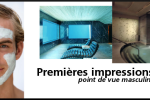Fatigue, bouts of the blues and periods of stress characterize the winter months. And whatever affects our state of mind can have an impact on the condition of our skin: it becomes dull and dehydrated; wrinkles grow deeper. The lack of light during this period tends to throw off our internal biological clock. Light is a true paradox: while on the one hand, it is essential to the proper operation of our body, its ultraviolet rays can also be damaging. How can cosmetics harness the benefits of light? What are the secrets of the laboratories?
The healing properties of light have been venerated for thousands of years, with sunlight being one of the oldest therapeutic measures used by humankind in the treatment of disease. As we have grown more urbanized, we have slowly moved from an agricultural lifestyle to one where we spend more time in closed environments devoid of sunlight. We have also come to recognize problems related to prolonged exposure to the rays of the sun, developing more powerful sunscreens to keep harmful sunrays from reaching and damaging our skin.
While the use of light has a long history, its application in the cosmetic industry has recently accelerated. Light is used in the fields of health and beauty for beautification and treatment purposes, thanks to the development of equipment emitting different types of light:
- a sunrise simulator for a gentle awakening
- a unit disseminating natural light or blue light to stimulate our energy and make the most of summer year-round
- an infrared light to alleviate muscle pain
- photobiostimulation for a skin rejuvenating effect.
Light can be used in whole or in part, depending on the desired effect. Every colour in the light spectrum corresponds to a specific wavelength, which in turn has a specific use:
- Blue light reduces flaws and improves the microprofile
- Green treats skin spots by regulating their activity
- Yellow has an impact on cell renewal, acting on the source of wrinkles
- Red acts on the production of collagen and elastin, improving skin density.
Given recent publications on visible light, these units can now be found in the offices of dermatologists, as well as in the homes of consumers who can tap into the beneficial effects of light energy.
For the rest of the article, please refer to our online magazine!






